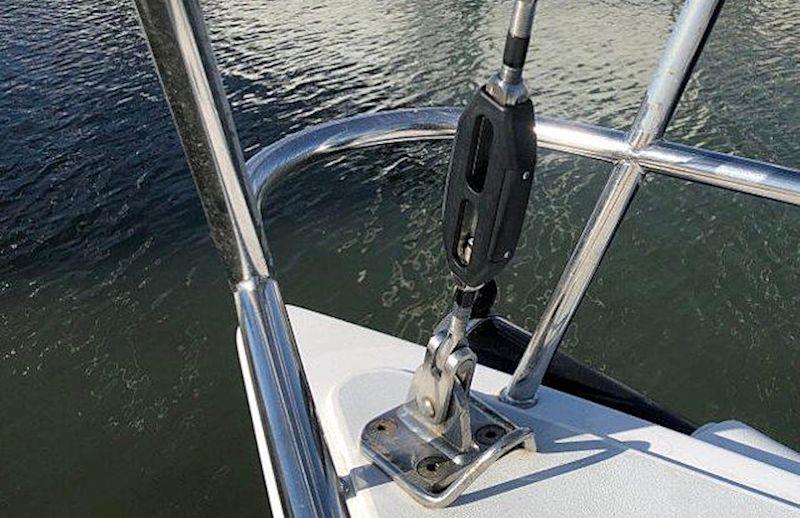
Sailboat Load Data - Optimising Hardware and Rigging Design
by Phil Anniss 30 Jul 2020 09:00 PDT

Sailboat Load Data - Optimising Hardware and Rigging Design © Cyclops Marine
Find out just how far we still have to go in terms of understanding yacht mast and rigging loads, and why they are so important to the specification of sailing hardware and rigging systems.
Computer Aided Design
Yacht rigging and hardware design starts with some pretty fancy computer design tools, e.g. Finite Element Analysis (FEA) and Computational Fluid Dynamics (CFD). With all that computer power behind it, the expectation is that we must be approaching some super-optimised designs. In some areas we are, but in many others the colourful computer images hide an uncomfortable truth: these powerful models are only as good as the technical assumptions they are built on.
When you start to dig into these models, some of the core assumptions used are based on rule-of-thumb estimates, which have evolved over the last 30-50 years, rather than scientifically verified fact. Sometimes the computer model is tweaked until it delivers the expected outcome, which conforms to perceived wisdom of what should work!
There are two primary reasons why these assumptions have yet to be validated: a) a lack of available data on the complex dynamic loads at work in the sailing environment and b) the resources required to do the extensive, structured R&D.
Before everyone starts panicking, this is not to say that existing hardware and rigging is badly designed or not fit for purpose - it is. However, it has been designed based on years of trial and error rather than accurate computational design. The upside is that these powerful computer models may yet deliver significant future performance gains, if their core assumptions can be properly tested and validated.
And why is this search for increased performance relevant to everyday sailors?
At upffront.com, "performance" doesn't necessarily mean coming first at the top mark, or maximum foiling speed, it means removing weight where it is not needed whilst making sure the fitting or rigging element is strong enough to do the job.
A fitting which is over-specified will be safe, strong and last a long time, but it adds additional weight which in turn puts unnecessary load into the system. On the other hand, a fitting that is underspecified will be nice and light but it will be working at a higher percentage of its designed break load, which means it will fatigue more quickly and possibly fail. So optimising our hardware and rigging design is about creating lighter and faster YET safer sailing - a win-win for all sailors.
So how do we optimise rigging and deck hardware?
If you take a look across the upffront.com website you will notice that the most common product attribute is Safe Working Load (SWL), because this is THE primary specification criteria for most sailing hardware and rigging. But, do you know what the real load is in your jib sheet or main halyard? If you don't, then how do you make the right hardware choice?
Most of the time people use existing hardware as a guide, e.g. I need a block for a 10mm line, or something with an 8mm pin diameter. But every time you modify your boat, whether you get new, stiffer sails or add that dishwasher down below, you have an impact on the loads on your sailing systems. The only way we can improve hardware specification and optimisation is to have access to REAL load data.
Traditionally, load sensing technology has been expensive and difficult to install/maintain, with questionable data quality, due to calibration problems. Thankfully however, wireless technology, the proliferation of hand-held devices plus simple software interfaces have lead to some interesting innovation in the last few years.
Summary
Upffront.com is all about performance hardware and rigging systems and, to that end, we are passionate about understanding rig loads. In future articles we will go into more detail on some of the great products currently available on our website in our new, dedicated Load Sensing category - Browse the full range of Load Sensors.
If you have any questions about your rig loads or hardware and rigging specification, please do not hesitate to contact us at